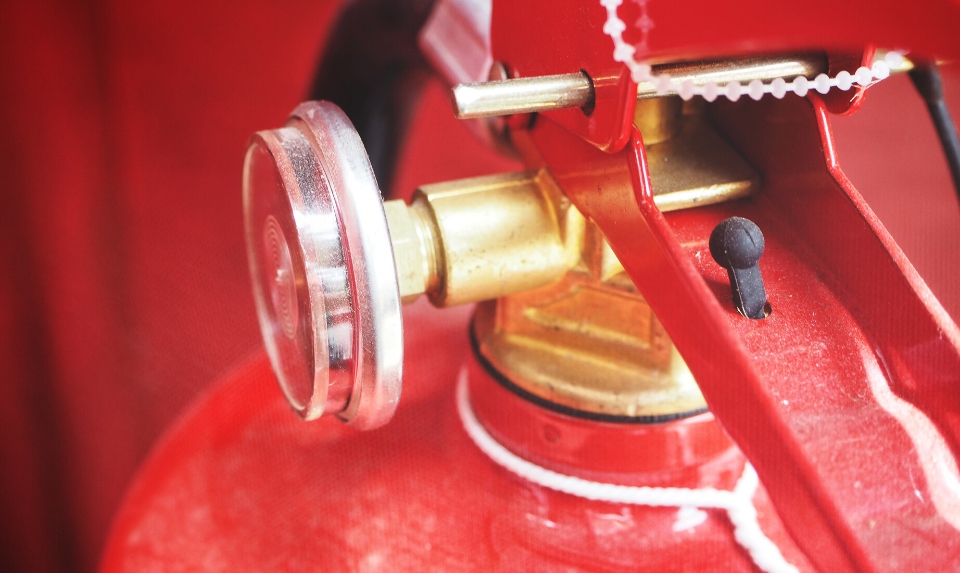Halon is a “Clean Agent.” The National Fire Protection Association describes, a “Clean Agent” as “an electrically non-conducting, unstable, or gaseous fire extinguisher that doesn’t leave remains after evaporation.”

The halon system is an extremely efficient fire extinguishing agent, even at low concentrations. In relation to the Halon Alternative Research Corporation: “Three things have to come simultaneously at the same time to start a fire. The initial ingredient is fuel (everything that can burn up), second, oxygen (normal breathing air is sufficient) and finally is an ignition source (high heat can cause a fire even with no spark or open flame). Usually, to prevent a fire you need to get rid of one side of the triangle – the ignition, the fuel or the oxygen. Halon puts in a fourth dimension to fire fighting – shattering the chain reaction. It impedes the fuel, the ignition and the oxygen from connecting together by chemically reacting with them.”
A key advantage of Halon, as a clean agent, is its capability to extinguish fire with no production of remains that could harm the assets being protected. Halon has been used for fire and blast safety during the 20th century, and remains an essential part of the security plans in a lot of today’s manufacturing, electronic and aviation business. Halon protects computer and communication rooms all through the electronics industry; it has many military applications on ships, aircraft and tanks and helps make sure safety on every commercial aircraft.
Because Halon is a CFC, production of new Halon was ceased in 1994. There is no cost efficient means of safely and efficiently disposing of the Halon. As a result, recycling and reusing the existing supply wisely and correctly to look after lives and assets is the wisest solution.
Why is Halon System the Best Option?
Fire requires three elements to thrive: fuel, oxygen and heat. The most familiar extinguishing agents like water, carbon dioxide, dry chemical and foams attack the fire physically to deprive the fire of one or more of the three vital elements required for circulation. Halon differs in the method it puts out the fire. It presents some of water’s cooling effect and some of carbon dioxide’s suffocating action, but its crucial extinguishing method lies in its ability to chemically respond with the fire’s components. It in fact disrupts the chain reaction of fire.
Water is very efficient on Class A fires (general combustibles similar to wood and paper). Halon system is efficient on common combustibles (even though not as useful as water), but Halon is as well efficient on Class B (flammable liquids), and it doesn’t conduct electricity back to the extinguisher. (Class C).
Halon system is comparable to CO2 in that it is appropriate for use in cold weather and leaves no remains. Not like CO2, yet, Halon doesn’t transfer the air out of the spot where it is dispensed. Even for the toughest fires, less than an 8% concentration of Halon by quantity is needed, leaving a lot of air to use in the evacuation method. And, not like CO2, there is no threat of “cold shocking” avionics or other susceptible electrical tools.
Dry chemical fire extinguishers are efficient on A, B and C class fires. Yet, they are highly corrosive, and make billowing clouds of choking dust; dry chemical extinguishers shouldn’t be used in aviation areas.
Foam extinguishers are efficient on class A and B fires, and are mainly useful for avoiding ignition of flammable liquid leaks. On the other hand, foams are inferior to Halon in that they do need cleanup and in that they are not for use on electrical fires.
Halon 1211 is a liquefied gas that, when discharged, leaves the nozzle in a torrent that is about 85% liquid and 15% gas. This provides the agent a variety of 9 to 15 feet and provides major advantages in fighting fires in huge aircraft cabins. Mixtures of Halon 1211 and Halon 1301 have discharge descriptions reliant on the component load ratio.
Is Halon System Still Legal?
Because Halon is a CFC, the production of Halon stopped on January 1, 1994, under the Clean Air Act. There is without cost-effective reasons of securely and efficiently disposing of the Halon that has already been created, as a result recycling and reusing the supply wisely and reliably to care for lives and property is the finest solution.
The EPA distinguished that Halon remains the most efficient “clean” extinguishing agent accessible, regardless of its ozone diminishing potential, and there are no federal or state policy ruling out the trade, buying or use of Halon extinguishers. All Halon existing now is recycled so it is an environmentally liable choice.

How Long Will the Supply of Halon Last?
While the manufacture of Halon stopped on January 1, 1994, under the Clean Air Act, it is still legal to acquire and make use of recycled Halon and Halon fire extinguishers. Actually, the FAA continues to suggest Halon fire extinguishers for aircraft.
At H3R Clean Agents, we are convinced that the final termination of Halon will happen not from enough supply, but from the development of an equally efficient agent that does not harm the ozone layer and is comparatively economical. No such agent is available yet.
How Safe is Halon?
Halons are low-toxic, chemically steady compounds that have been used for fire and blast protection from early on the last century. Halon has demonstrated to be a tremendously effective fire suppressant. Halon is clean (i.e., leaves no remains) and is amazingly safe for humans. Halon is an extremely effective agent for firefighting in closed passenger carrying areas. Because of its effectiveness and fairly low toxicity, the FAA continues to suggest or require Halon extinguishers for use on commercial aircraft.